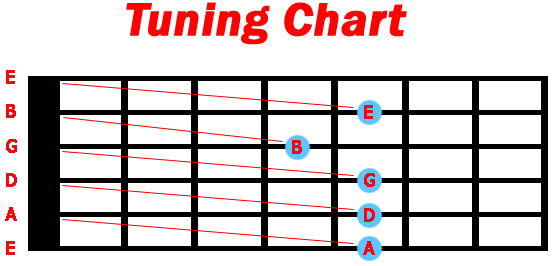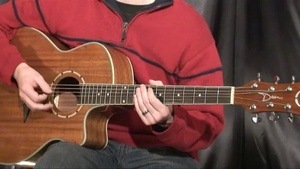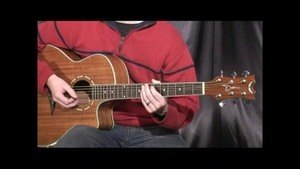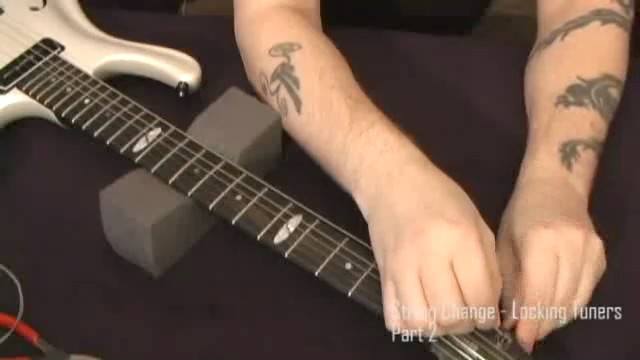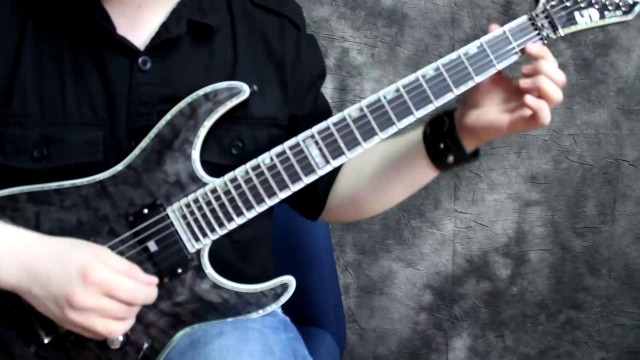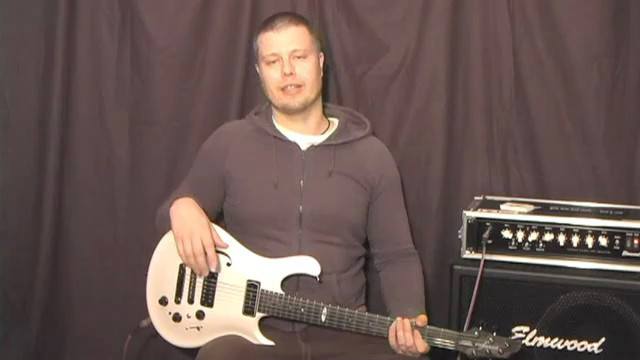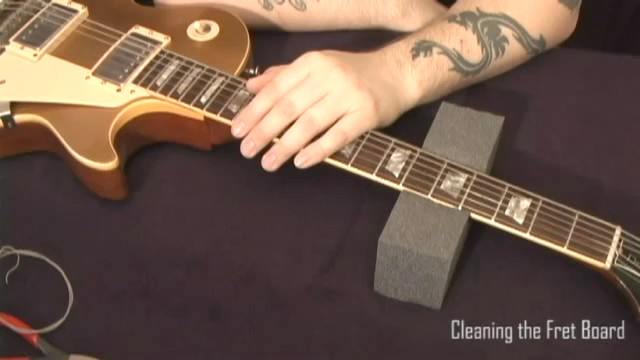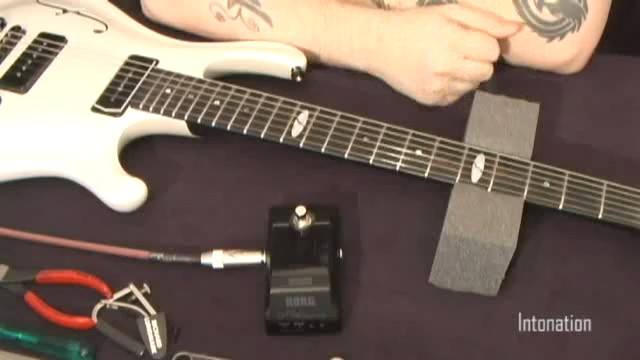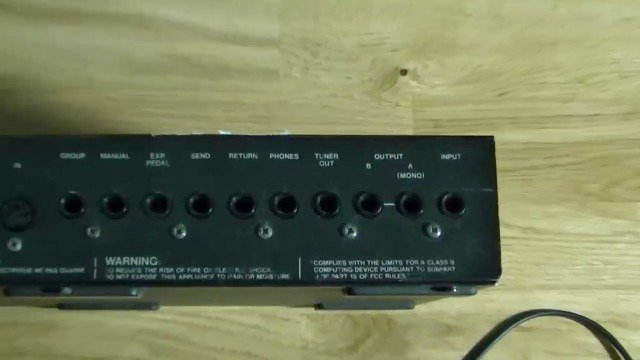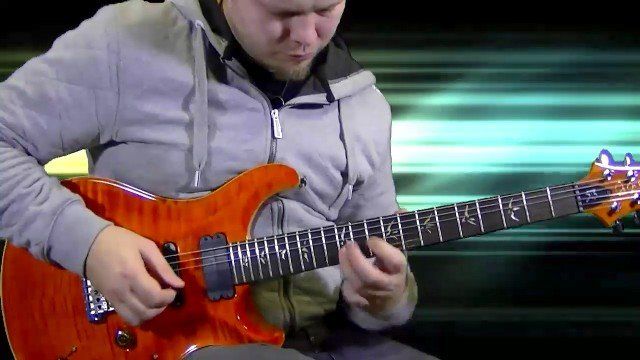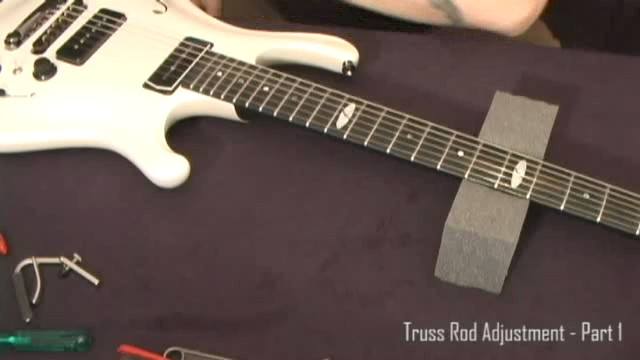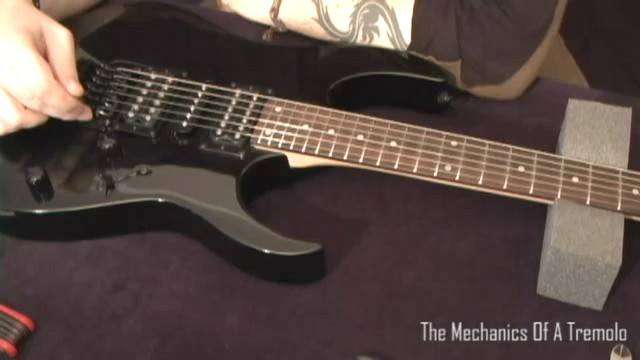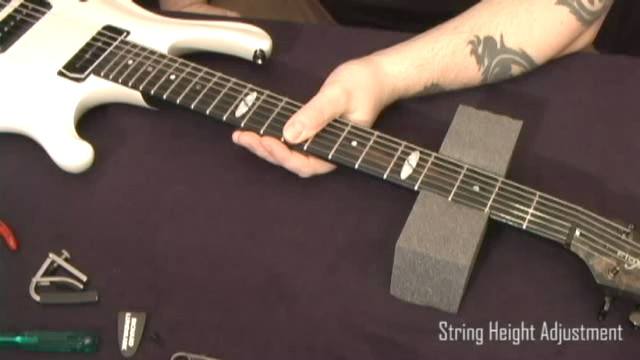(Tuning Chart below)
In the video, I show you how to tune your guitar using just your ear.
Basically, you can tune your whole guitar using just your Low E string as a starting reference point. So that means that we'd need to make sure the Low E string is in tune before we start tuning the other strings to it. The best way to do this is by tuning it to an electric tuner or an "E" note on a piano.
Once your Low E is ready, you can tune the rest of the strings by ear. Now let's tune your A string. So first, you need to find the reference note, which is on the 5th fret of the Low E string. Play that 5th fret A note, then play the actual A string to determine whether the A string is sharp or flat compared to the A note on the E string. If the A string is too low (flat), then you need to tighten the tuning knob until it matches. If the A string is too high (sharp), then you need to loosen the tuning knob until it matches.
Next, you'd tune your D string using the same method. Then the G string, the B string, and lastly, the High E string. Look at the picture below to find where the reference note is on each string. If you notice, all the reference notes are on the 5th fret except for when you tune your B string, in which case the reference note is on the 4th fret of the G string.
Even though tuning may be a bit boring, it's very importnant to practice it, especially if you're a beginner. The more you practice tuning by ear, the better you'll get at identifying notes in general.
Lastly, at the end of the video, you may have noticed how I sang/hummed the reference note while I was tuning. If you can sing and match pitches with your voice, practice this tuning method as well as it can help you tune a little faster. I personally don't hum out loud like that every time I tune my guitar. But I do practice humming the reference notes in my mind so to speak. So once I play a reference note, I immediately memorize the pitch in my head as I tune the appropriate string. That way, I don't have to keep going back and forth with my hand from the tuners to the fretboard.
Happy tuning!
